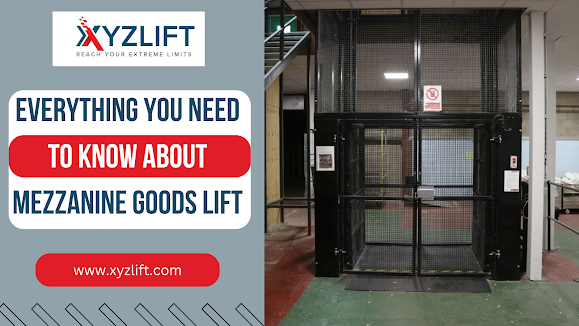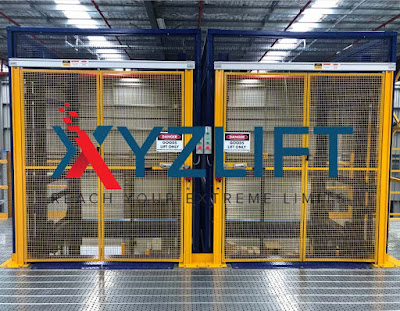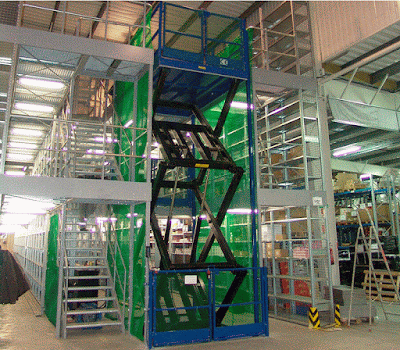Everything you need to know about Mezzanine Goods Lift
Adding a mezzanine level to your warehouse or storage area is an excellent method to make the most of your available square footage. The ability to rapidly and efficiently reach an additional floor and collect stock increases the likelihood that you can supply more items more quickly.
If you want to ensure the safety of your employees and operators, installing a Mezzanine Goods Lift is one of the quickest, safest, and most secure ways to gain access to your mezzanine level.
Application of Mezzanine Goods Lift
When an intermediate floor in a building is partially open to the double-height floor below or doesn't cover the entire floor space, we call it a mezzanine. A well-designed Mezzanine Goods Lift can serve multiple purposes. Warehouses frequently install industrial mezzanines to create much-needed extra space for storing goods, developing new products, and accommodating other growth-related needs.
To make the most of a mezzanine level, elevators are frequently installed at the edges or center of the level to facilitate access or goods handling.
Typically, Mezzanine Lift is used to transport oversized, bulky objects in manufacturing and retail settings. They provide consistent, low-cost operation in various commercial settings, from laundromats and shops to train stations and manufacturing sites.
Mezzanine Goods Lift Raises Productivity and Security
The installation of Mezzanine Goods Lift facilitates movement between floors. You can use them to ensure compliance with all relevant laws and regulations, such as the Health and Safety at Work, etc. Act of 1974 and the Manual Handling Operations Regulations 1992.
Mezzanine Goods Lift safeguards employees from injury caused by the constant hefting of awkward, heavy objects. Because of this, you can rest assured that your business will continue to function without interruption, and you can reduce the risk of lawsuits related to workplace injuries.
Mezzanine Goods Lift options for accessing mezzanine floors
Mezzanine Goods Lift can range in size and capacity from compact units to large, heavy-duty goods lifts and goods-attendant lifts. Each one is built to transport specific kinds and sizes of cargo.
Selecting the most appropriate lift method is crucial. A variety of mezzanine lifts come pre-assembled in their frameworks, requiring minimal modifications to the building and allowing for rapid installation.
Mezzanine Goods Lift with more space can be outfitted with a goods attendant or used solely for goods. Goods attendant lifts include extra buttons and a means of emergency contact to ensure the security of passengers. One can use a regular passenger or platform lift as a mezzanine lift, carrying people rather than goods to the second level.
A minor goods-only lift, with floor-level loading or a Microlift for modest waist-height loading, also serves mezzanine levels if the weight of the transported goods is less than 500 kilograms.
Space, a pit for floor-level serving, a ramp, and a three-phase power supply are all required to install a Mezzanine Goods Lift; additional construction work is minimal. The lift installation engineers will take care of the rest, and your lift will be operational in a matter of days with minimal downtime for your company.
However, prices for other models and critical criteria, such as size and landing arrangement, as well as your preferred customization and finishing options, might vary substantially.
The best way to find out how much a Mezzanine Goods Lift will cost and begin realizing the full potential of your Mezz floor is to organize a site visit from a reliable lift provider.
Conclusion
XYZLIFT primary goal is to help clients who could benefit from Mezzanine Goods Lift at their particular sites save time and money. Our state-of-the-art production processes allow us to propose superior benchmarks in capacity, platform size, speed, materials, access opening, and so on.




Comments
Post a Comment